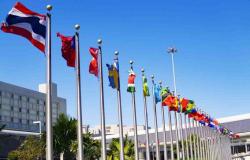The ozone hole is expected to close completely around 2060
The concentration of gases responsible for the ozone hole peaked in 2021, 5 years ahead of schedule. International efforts to combat hydrochlorofluorocarbons (HCFCs) and chlorofluorocarbons (CFCs) are yielding better and faster results than expected. Even though the decline recorded between 2021 and 2023 was only 1%, it is enough to argue that we have turned the tide.
“Without the Montreal Protocol, this success would not have been possible, so this is a resounding endorsement of multilateral commitments to combat stratospheric ozone depletion, with additional benefits in the fight against human-induced climate change”he comments Luke Westernfirst signature of a study published on Nature Climate Change.
The Montreal Protocol of 1987 established a global path for the phase-out of CFCs, which was completed in 2010, and HCFCs. For the latter, production is gradually decreasing globally and should be eliminated completely by 2040. There is no shortage of flaws. Some studies have recorded an anomalous increase in the concentrations of some CFCs between 2010 and 2020, even though none of them anymore – in theory – have any industrial use. But they are precursors used in the production of HFC gases, which have replaced those harmful to the ozone layer.
The future trajectory of the ozone hole
The study calculated that the average radiative forcing of ozone-depleting gases peaked in 2021 at 61.75 ± 0.056 mW/m2, then declined to 61.67 ± 0.058 mW/m2 the following year and to 61 .28 ± 0.069 mW/m2 in 2023.
What will be the future trajectory? The decline will not be rapid, the authors of the study hypothesize, given that international regulations only attack the production and consumption of HCFCs, but not their emissions into the atmosphere. Leaks of hydrochlorofluorocarbons from equipment and foams will continue to fuel their concentrations in the atmosphere.
Nonetheless, the ozone hole is closing. The most recent scientific assessment by UNEP and WMO on the matter estimates that the measures envisaged by the Montreal Protocol will bring the ozone layer on the path to recovery as early as 2035 for the Arctic and Northern Hemisphere, in 2050 for the Southern Hemisphere, and by 2060 for Antarctica.





